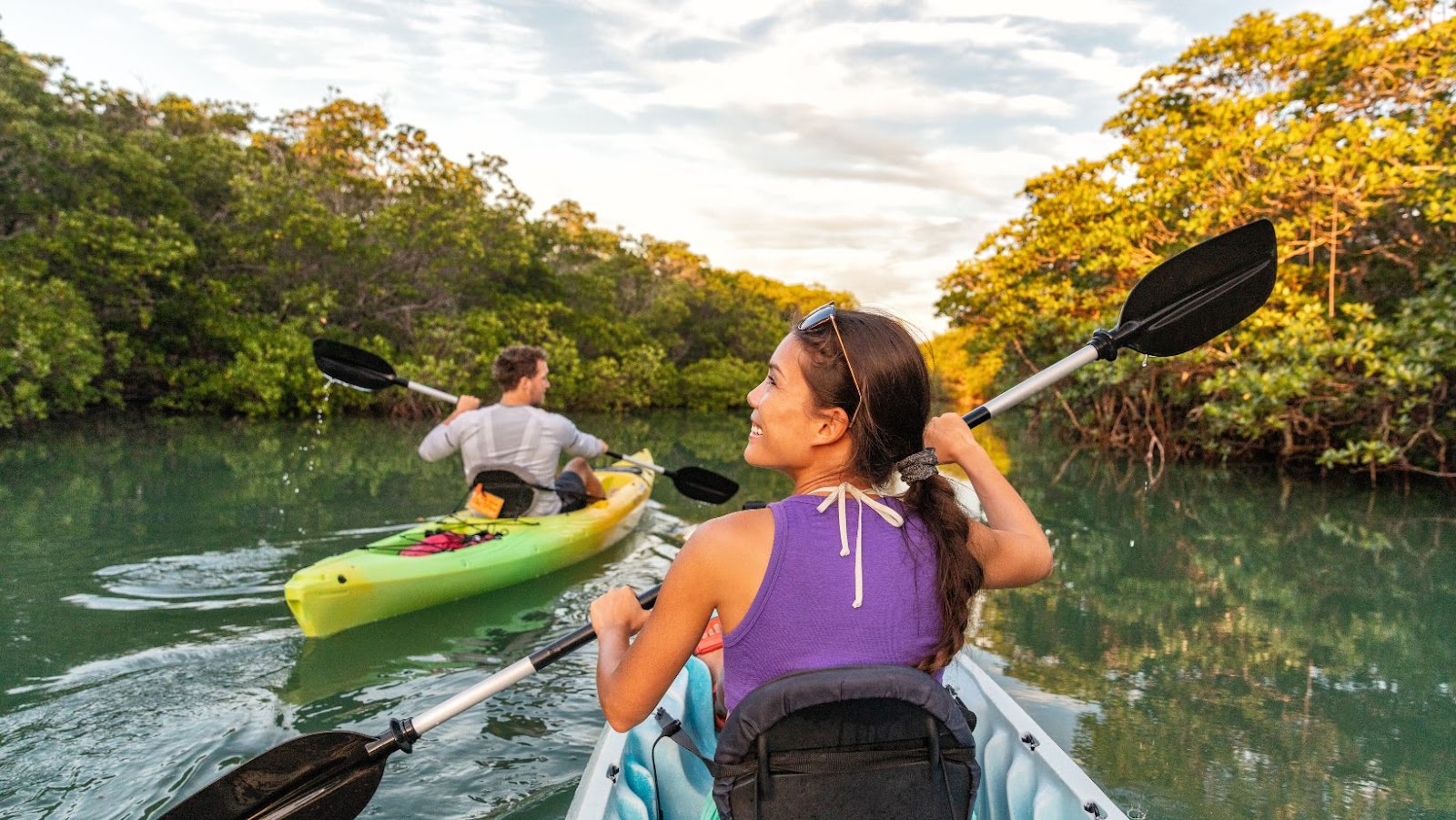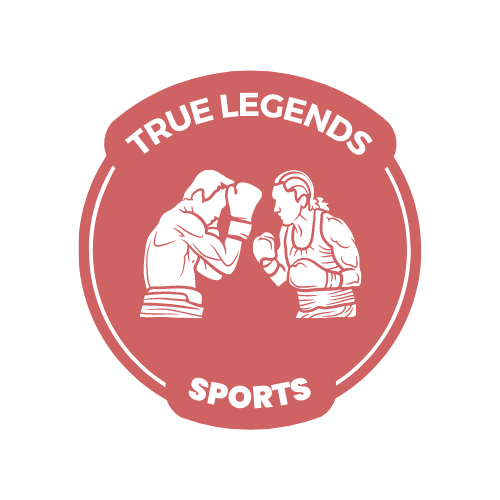Are you looking for a low-impact, full body workout? Kayaking is the perfect way to exercise and strengthen the muscles of your arms, legs, back and core. Not only is it an excellent physical activity, it’s also a fun way to experience the outdoors.
Read on to learn about how kayaking benefits your muscles.
Introduction to Kayaking
Kayaking is an outdoor sport that is enjoyed by people of all ages. It requires the use of a kayak, which is specially designed to provide stability in the water while allowing the paddler to move quickly and easily. Kayaking can help strengthen a number of different muscle groups and offers a great full-body workout. A proper kayaking technique will also help reduce your risk for injury, making it a safe and fun way to keep in shape.
In addition to providing an aerobic workout, kayaking can be used as a way to strengthen and tone muscles throughout the upper body, core, and lower body. It strengthens your arms, chest and back muscles as well as several other important muscle groups that contribute to maintaining balance while paddling. The glutes are especially activated with each stroke due to the resistance caused by pushing away from the water surface. Additionally, abdominal muscles play an important role in maintaining good posture while seated in the kayak on longer trips. Kayakers must also utilize leg muscles such as hamstrings and quadriceps when bracing themselves against waves or strong currents.
Benefits of Kayaking
Kayaking is an exciting outdoor activity that offers a range of physical and mental benefits. One of the main benefits of kayaking is its ability to help develop and strengthen several muscles in your body. Knowledge about what muscles does kayaking work will enable you to have a better understanding of the full benefits that this thrilling activity offers.
Kayaking uses muscles in your arms, back, shoulders, chest, and core. The paddling motion requires you to engage your arms and back as you pull on the paddle through each stroke. It also requires upper body strength and stability; good core strengthening; shoulder stabilization; as well as your wrists and forearms to help power through each stroke.

Furthermore, some other muscles which are also worked when it comes to kayaking include legs, glutes, thighs, calves, neck/traps (upper part of your back), lats (the muscular area at the sides of your waist), abdominals (stomachs), hips flexors (these are the primary hip joint muscle) and rotators (smaller external and internal rotator muscles).
By engaging all these major muscle groups when you go kayaking regularly or even occasionally —depending on how much strength training you do —you will be able to strengthen them with every stroke helping you gain more flexibility overall as well as balance control when paddling on water. With strengthened muscles from engaging in kayak sessions regularly may also result in better coordination skills due to increased balance control you’ll be able to achieve while paddling on calm waters or during racings circumstances! All these positive effects combined can help boost both physical performance levels by developing greater proprioception meaning an enhanced understanding of one’s own limbs during motion he/she performs throughout daily life activities.
What Muscles Does Kayaking Work?
Kayaking is an incredibly rewarding and satisfying outdoor activity that engages many different muscles of the body. Most people are surprised when they discover how many areas of their bodies are getting an effective workout when kayaking. In general, kayaking works muscles throughout your back, arms, shoulders and core in both reactive and stabilizing ways.
When you paddle forward, the muscles affected include your latissimus dorsi, trapezius and middle deltoids in the back; biceps, triceps and pectorals of your arms; anterior deltoids in the front of the shoulders; abdominals at your core; plus many more muscles that help with power production. This type of movement engages multiple joints including your back, elbow and wrist joints as well as several small stabilizing muscles throughout these areas to increase coordination while building strength.
Additionally, you’ll also benefit from engaging your glutes or thigh muscles during turning maneuvers. When turning left or right with a kayak stroke, you need to actively use a rotational force to complete the maneuver safely and efficiently. Your glutes will be engaged to drive hip extension while other lower-body musculature will direct torque into your core from rotations along the spine — both important parts for keeping balance in a kayak! And don’t forget about those leg-driven sweeps for refined directional control too – these require strength and coordination from all different types of musculature along legs, hips (and even feet!).
Overall, whether you’re out for a leisurely paddle or thrilling whitewater adventure with friends, partaking in regular kayaking activities will contribute to increased muscular strength across multiple muscle groups – particularly those key locations mentioned above!
How Kayaking Strengthens Your Muscles
Kayaking offers a full-body workout that strengthens your muscles from head to toe. Depending on the type of kayaking you are doing, you can expect to see muscular benefits in some key areas of your body.
Upper body: The upper body benefits most significantly from kayaking, as paddling is a powerful yet highly controlled motion generated by the arms and shoulders. Strengthening these muscles is critical for success due to the hefty workload expected of them while paddling through the water. Rotator cuff exercises or shoulder presses can further strengthen these muscles and give you more strength while paddling.
Core: Maintaining balance in a kayak relies heavily on muscular strength in your chest, abs, and back. Controlling your center of balance will help you stay more steady in choppy waters or turbulent rapids. Working out with medicine balls will help strengthen these core muscles in order to improve control and stability while kayaking.
Legs: The legs provide power for movement both off and on the water, aiding with propulsion when embarking onto new lakes or rivers. Kayaking builds up muscular strength through squats, lunges and other leg exercises that allow for more agility when maneuvering around obstacles or turning swiftly around curves created by a current.
Overall: Reaping all these benefits involves complete workouts for every muscle group; cardio exercises like bicycling supports endurance which allows you longer paddles free of fatigue setting in prematurely. Overall exercise level should include efforts to work out every muscle group aiming for combination between flexibility and tightness resulting from each set – specially designed programs tailored according to individual preferences can be beneficial too!
What Kind of Kayaking is Best for Muscle Development?
When it comes to developing core and arm muscles while kayaking, the best type of kayaking is going to be white water paddling. Whitewater paddling involves weighted boats and runners, which can require more strength and power than recreational or flat water kayaking.
While recreational and flat water kayaking allows individuals to cover longer distances while developing some muscle, whitewater paddling requires a significant amount of strength from both the upper body as well as the core. Core muscles such as the abdominals, arms and back become engaged every time a person paddle’s a white-water kayak down stream or up stream.
In addition, persons engaging in this sport are subject to building upper body strength by using powerful strokes including digging into the water with their paddles for each stroke for propulsion. Moreover, whitewater paddling uses many of the poly (small) muscles groups connected to making powerful movements possible in relation to stabilization, reaching and grabbing with the arms or other areas around or under your boat. Thus not only do you benefit from attractive arm muscles but also develops attractive abs through intense use of core control while maneuvering within rapids with ease when practicing this sport correctly.
Tips for Kayaking to Maximize Muscle Development
Kayaking can provide a range of benefits for both the upper and lower body, depending on the type of paddling you’re doing. To maximize your muscle development during kayaking, focus on these tips:
1. Engage your core muscles: Many kayakers forget to engage their core muscles while they are paddling. However, this is a key component to balance and stability in the boat, and will help to develop those deep abdominal muscles. Make sure that you are maintaining an erect posture while seated in the saddle, and brace against the side braces with your abdominals engaged. This will also help to improve your power transfer as you paddle.
2. Alternate between fast and slow strokes: Varying between strokes helps to improve strength in different areas of arm and upper body muscles as well as leg muscles for those using double ended paddles. Quick strokes expend more energy but build up muscle with shorter bursts of intensity while longer strokes will help build up additional endurance.
3. Use resistance training: Adding in accessories such as paddle weights or kettlebells while paddling can also boost muscle development when used strategically over target areas of the body or throughout a workout session. For example; coaches often recommend adding drag exercises which involve keeping higher tension on your blade through each stroke to accentuate impacts on muscle fibers throughout certain areas like arms or shoulders for those looking to develop upper body strength specifically when kayaking.
Following these steps can help maximize your muscle development during kayaking safely and effectively with mindful technique that could be transferred across multiple sports activities if desired.
Common Mistakes to Avoid When Kayaking
When starting any new activity, it’s important to know the common mistakes to avoid in order to stay safe. This is especially true with kayaking, as mistakes can lead to awkward body positions that negatively impact the muscles being worked. Here are some common errors to watch out for:
• Not Wear a Life Jacket: It’s not mandatory by law but paddlers should always wear a life jacket. Unexpected incidents and unintentional capsizing increase the risk of injury or drowning. Wearing a personal flotation device ensures that if you fall out of your kayak, you will remain afloat until help arrives.

• Tilting Too Far Forward or Backward: Maintaining proper posture while kayaking is key to safety and enabling proper muscle engagement. Tilting forward requires extended spinal movement and puts undue focus on lower back muscles potentially leading to tissue tightness. Conversely, tilting too far backward may put more emphasis on quadriceps pain and fatigue.
• Misusing Your Paddles: Different strokes use different muscles depending on how much pressure needs to be applied. Be sure to pay attention to your technique – an inefficient stroke can create undue resistance for your paddling muscles which can cause cramping and weakness over time.
By avoiding these common errors when Kayaking, you will be able maintain correct posture and promote synchronized muscular stability from the core muscles all the way down into the lower body musculature while engaging in this enjoyable sport.
Conclusion
Kayaking is an incredibly versatile sport that can benefit your health, muscles and longevity in a variety of ways. Not only does it provide an excellent workout, it engages several major muscle groups -from your core to your arms and legs – for a well-rounded exercise routine. Best of all, you don’t have to be an expert kayaker to experience the benefits – beginners can embark on a relaxing journey out on the water and get great results.
Whether paddling flat waters or surging whitewater, you’re sure to have a fulfilling boating experience while engaging multiple muscle groups. By kayaking regularly, you can build strength and fitness while improving endurance and agility.


No Comment! Be the first one.